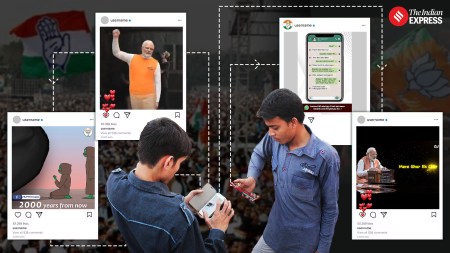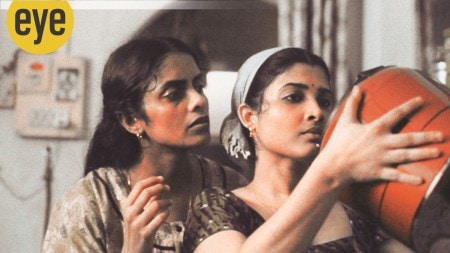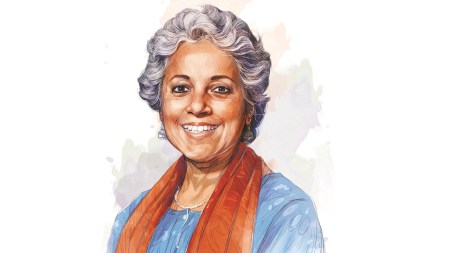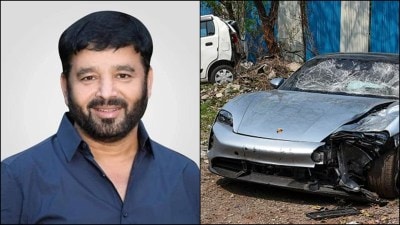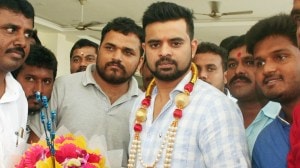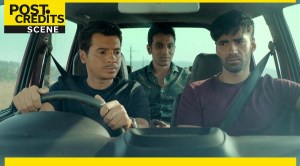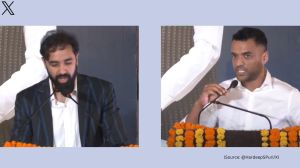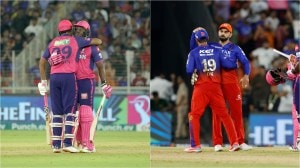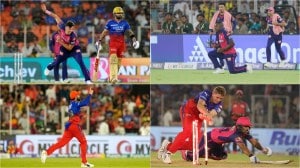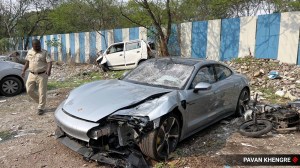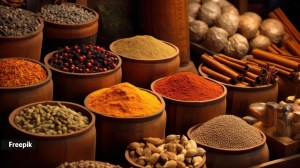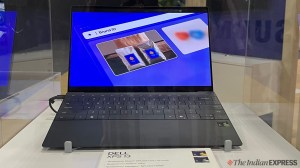- India
- International
Asha Bhosle at 90: How the playback singer became the voice of versatility
A look at one of India’s first pop stars and the most recorded artiste in the world, Asha Bhosle, on the occasion of her 90th birthday.
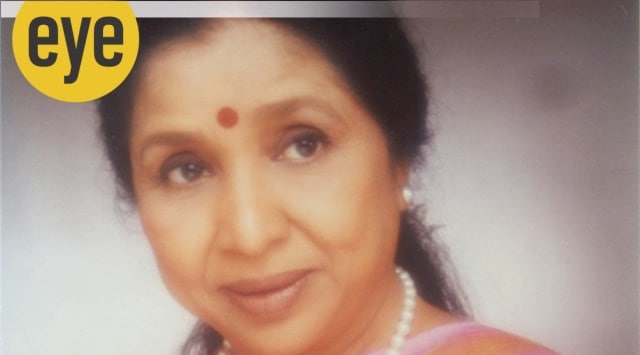 At 90, Asha Bhosle can still flick the casino lights like no other singer half her age can. (Express archive photo)
At 90, Asha Bhosle can still flick the casino lights like no other singer half her age can. (Express archive photo) When filmmaker Muzaffar Ali wanted to capture a subject as poetic as Umrao Jaan Ada, the famed Awadh courtesan and the eponymous subject of Mirza Hadi Ruswa’s 1905 novel on celluloid, he was certain that noted actor Rekha would be apt for the role. The grief had to be overwhelming, the sensuality riveting while the borders of two were to be dissolved often. And, therefore, he and composer Khayyam decided that the singing voice in Umrao Jaan (1981) needed to come with some heft.
The obvious choice for the ghazalnuma gayaki of the film would have been Lata Mangeshkar, the pre-eminent name that had held the nation in thrall in the genre with Madan Mohan earlier, and especially after Pakeezah, which nine years before, had immortalised the song of the courtesan through Ghulam Mohammed’s compositions. But Ali, then a young filmmaker with one film, Gaman (1978), in his cache, felt that Mangeshkar’s voice could be “slightly high-pitched for the character” of Amiran, a girl kidnapped from Faizabad and who becomes Lucknow’s most popular shayara and courtesan in the mid-20th century. As for Khayyam, he was concerned about not wanting a Pakeezah hangover. Ali was portraying the last gasp of Awadh – its opulence and the demise. So, they both agreed on Asha Bhosle, “the versatile voice with an incredible range” for the voice of Umrao Jaan. “Khayyam sahab and I felt that she could make it sound like a non-film song, a ghazal. Asha ji came with a lot of experience and commitment. She asked me to recite the book to her, then the poetry. She came for many many rehearsals and brought life to the songs and the film,” says 78-year-old Ali.
The result was a bunch of ghazals that captured the heart of a generation. Penned by Shahryar, ‘Inn aakhon ki masti ke’, ‘Dil cheez kya hai’, ‘Justju jiski thi’ and ‘Ye kya jagah hai doston’ – the four ghazals, sung one and half note below Bhosle’s usual pitch, perhaps to suit Rekha’s speaking voice, got the singer the first National Award of her career, nearly 30 years after she first began to sing. Composer Khayyam would often say that Bhosle was unhappy during the recording but the final pieces surprised her, too. Soon, the songs found a cult status. It was alsi proof that Bhosle — the voice of the vamp who could sing the cabaret song with much aplomb – could nail the semi-classical film ghazal and be brilliant at it. She was younger to Mangeshkar by four years but in no way second rung. Nor was she there only to sing the leftovers, which she did for many years at the beginning of her career.
On September 8, she turned 90. Even now Bhosle stands tall when she sings Dil cheez kya hai aap meri jaan leejiye, bas ek baar mera kaha maan leejiye (What is the heart worth? Take my life instead/ But just once please accept what I say), swelling those notes; the ada in tow, her conviction is extraordinary. Umrao Jaan seemed to know that he would agree. Bhosle’s voice made sure of that.
“It isn’t a flat, sweet voice. It has a bit of a ‘come on’…; it has life in it. It’s like the goddesses in India – she is the coquette, she is the pure, she is all of it,” said Smita Patil in the British Film Institute’s documentary, Asha (1986, Neville Bolt).

Bhosle grew up in Kolhapur, where the Mangeshkar family moved from Pune after family patriarch Dinanath Mangeshkar’s demise so that the elder daughter Lata, 13, could work in the robust Marathi film industry of the city. Bhosle, nine then, was fascinated by English films such as Gone with the Wind (1939), For Whom the Bell Tolls (1943) and Fred Astaire films, besides the sultry voice of Portuguese-Brazilian actor and samba singer Carmen Miranda. She would come home, drape a dupatta, and sing Mama yo quiero while dancing like Miranda. “My mother thought I was crazy,” says the singer, in Asha (1986).
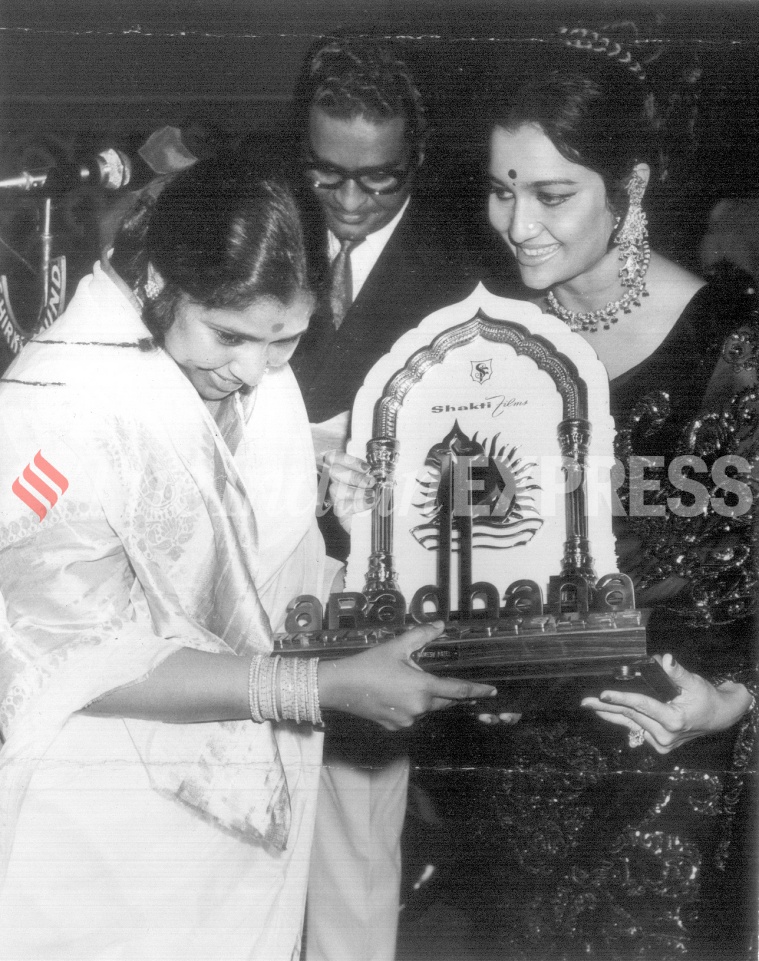 Asha Bhosle with Asha Parekh. (Express Archive Photo)
Asha Bhosle with Asha Parekh. (Express Archive Photo)
A year after moving to Kolhapur, Bhosle made her debut in the Marathi industry at 10 with Chala chala in Majha Bal (1943). But her Hindi solo came in director Jagdish Sethi’s Raat Ki Rani (1949). The way her voice glided confidently, delicately dealing with the complicated composition Do chaar idhar, was a glimpse into what was to come in the future.
Around this time, 16-year-old Bhosle eloped with 31-year-old Ganpatrao Bhosle, her elder sister’s secretary, and the two got married against the family’s wishes. The couple had three children together and divorced in 1960.
Musically speaking, Bhosle came to an exquisite film industry with some of the finest composers, filmmakers and singers joining forces, of course, to make a living, but also for the sake of high art. Even though Noor Jehan had left for Pakistan after the Partition, singers such as Geeta Dutt, Shamshad Begum and, more recently, Mangeshkar had come to dominate the film industry. At this time, Bhosle would usually get the leftovers, mostly bawdy pieces picturised on the vamp, ones that were unwanted and ones where budgets were low.
 Lata Mangeshkar and Asha Bhosle. (Express archive photo)
Lata Mangeshkar and Asha Bhosle. (Express archive photo)
“Back then the women characters weren’t as liberated. Therefore, through several decades, Lata Mangeshkar sang for the righteous and pure Indian woman on screen, while Asha Bhosle was the voice of the vamp or the cabaret singer. Puraane zamaane ki heroine dabi huyi thi. The romance of those days required your heroine to be coy. If you wanted a flirty or sensuous voice, you called in Asha,” said Anand ji of the legendary musical duo Kalyanji-Anandji in an interview to this reporter in 2013.
In 1953, Bhosle sang for Bimal Roy’s Parineeta starring Ashok Kumar and Meena Kumari followed by the song Nanhe munne bacche in Raj Kapoor’s Boot Polish (1954), and Chhod do aanchal with SD Burman (Paying Guest, 1957) which got her some attention. But it was OP Nayyar, who turned her fledgling career around with BR Chopra’s Naya Daur (1957), the Dilip Kumar-Vyjayanthimala film with man v/s machine as its theme. Songs such as Ude jab jab jhulfe and Maang ke saath tumhara ingrained in Punjabi folk, were ripe for radio and resonated well in Bhosle’s voice. But what really glistened was the sensuous Aayiye meherbaan (Howrah Bridge, 1958) and then there was no looking back. She sang some of her best – Ye reshmi zulfo ka, Deewana huya baadal, Jaayiye aap kahan jaayenge and songs from Kashmir Ki Kali (1964), among others, with Nayyar.
In his interviews, Nayyar had often spoken of their professional and personal closeness and the separation later. The last song that Asha recorded for Nayyar was the sublime and melancholic Chain se humko kabhi aap ne jeene na diya (Pran Jaye Par Vachan Na Jaye, 1974), which looked inward with great depth and earned many accolades despite not being included in the film.
During her stint with Nayyar, Bhosle had also caught the attention of composers such as SD Burman, Jaidev, Roshan, Shankar-Jaikishan, Khayyam, RD Burman. The rock-n-roll wave which had Eena mina dika (Aasha, 1957) and CAT cat mane billi (Dilli Ka Thug, 1958) struck a chord, and so did many pieces with Kishore Kumar including Haal kaisa hai janaab ka (Chalti Ka Naam Gaadi 1958) besides qawwalis such as Na toh karvaan ki talash (Barsaat ki Raat, 1960) and Nigahe milane ko jee chahta hai (Dil Hi Toh Hai, 1963).
Then in 1963 came Bimal Roy’s poignant Bandini and SD Burman’s composition of Shailendra’s lyrics, Ab ke baras bhej bhaiya ko baabul, the song defining the pain and sadness of a woman pining to see her family. The wistfulness travelled to some of the most remote villages in India through the radio where women waited and longed for their fathers and brothers to take them back home from their marital homes before the rains came in. The year belonged to Aapki nazro ne samjha (Anpadh, 1962) by Mangeshkar in every way. But this underrated and evocative ditty by Bhosle still finds honourable mentions in film music circles as being one of her finest renditions.
The rollicking ’70s is where Bhosle’s career got a new lease of life, with incredibly fun-to-listen-to but difficult-to-render songs that only RD could have created and songs that only Bhosle could have sung. She could cry and laugh in a song, use dialogues, and play with her breath to produce some absolutely slick and sensuous cabaret pieces, such as Piya tu ab toh aaja (Caravan, 1971), the phenomenal neon-hued Duniya mein (Apna Desh, 1972), the smooth Chura liya hai tumne (Yaadon ki Baraat, 1973) that followed the clinking of the bottles, the steamy Aao na gale laga lo na (Mere Jeewan Saathi 1972), the tipsy Aao huzoor (Kismat, 1968) that had a good smattering of rhythmic hiccups and Dum maaro dum (Haré Rama Haré Krishna, 1971), a piece that became synonymous with rebellion as Zeenat Aman smoked up and sang with abandon. The film owes much of its faddism to this RD-Bhosle piece, which was an absolute hoot. After all, not many singers can ‘sound’ high. Coming from the RD’s dynamic world, she fit into Bappi Lahiri’s disco station easily and had her voice spiritedly strut in Jawaan-e-jaaneman and Raat baaqi (Namak Halaal, 1982).
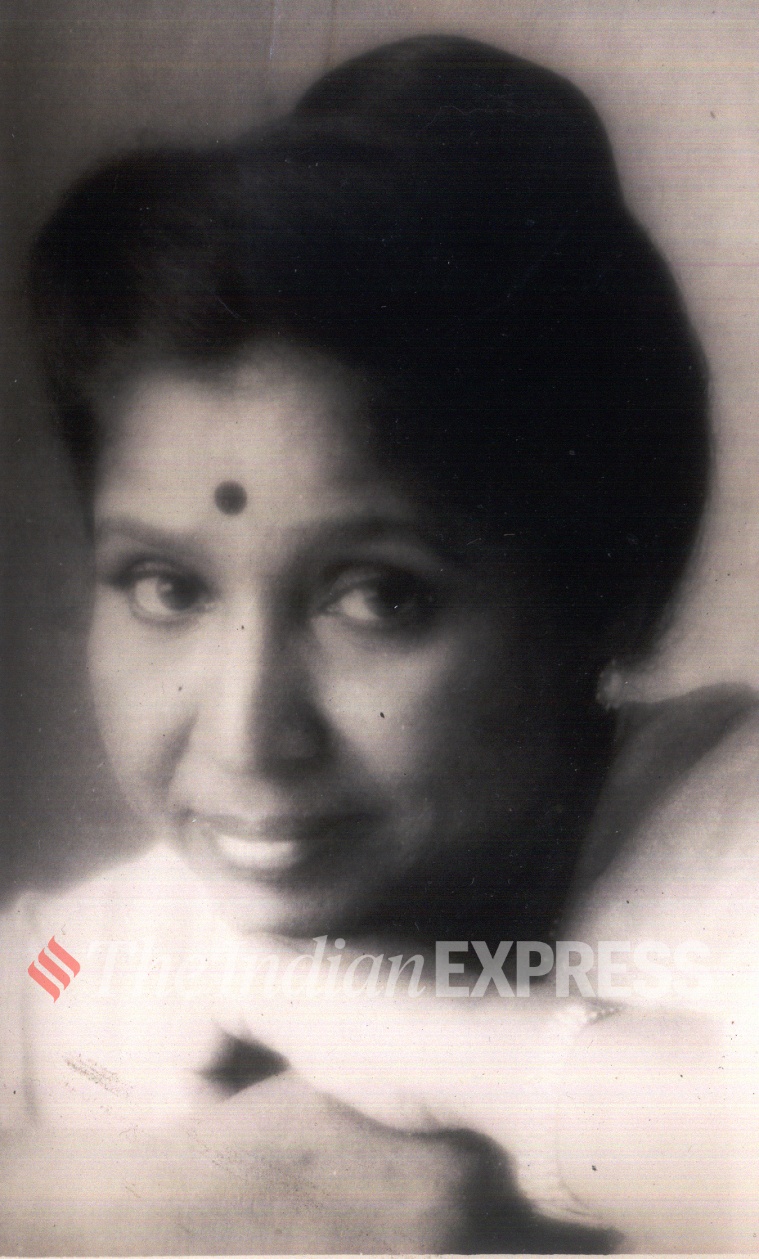 Asha Bhosle is a playback singer who changed the game by sticking to her guns, working hard, and crooning with so much power. (Express photo)
Asha Bhosle is a playback singer who changed the game by sticking to her guns, working hard, and crooning with so much power. (Express photo)
RD and Bhosle also did some very moving melodies, too, such as Mera kuch samaan (Ijaasat, 1974), Roz roz aakhon tale (Jeeva, 1986). Mera kuch samaan got Bhosle the second of her two National Awards. The two married in 1980 and remained together till RD’s death in 1994.
In the later years, Bhosle also recorded many private ghazal albums with Ghulam Ali and Hariharan, and collaborated with US-based sarod maestro Ustad Ali Akbar Khan, under whom she began learning in 1995 as his gandabandh shagird (student for life). The two collaborated on an album titled California for Legacy that earned them a Grammy nomination. She found a Grammy nomination again in 2006 for an album titled You’ve Stolen My Heart, with RD’s melodies. Well in her 70s and 80s, Bhosle continued to sing (she even collaborated with Australian cricketer Brett Lee), gave hits such as Le gayi le gayi (Dil Toh Pagal Hai, 1997) and Radha kaise na jale (Lagaan, 2001), and continues to attend reality shows, surrounding herself with the young besides sharing stories of her life and music. On occasion, one can still find her mimicking her sister, Lata, imitating the way she used to speak. She remains in the Guinness Book of World Record for the most-recorded artiste in the world.
Interestingly, Bhosle didn’t hide herself behind a white sari or an image of purity or the idea of how a woman should behave or speak. She experimented with her voice and did not pay attention to people’s notions that singing for the vamp was going to be an image-changer. At 90, she can still flick the club lights like no other singer half her age can, and elegantly light the shama for a mehfil of classical music lovers in the same space. She continues to sing with abandon on stage, packing a number of sonic punches.
Here is a playback singer who changed the game by sticking to her guns, working hard, and crooning with so much power – so much so that the name Asha Bhosle, the other nightingale, has and will continue to exert massive influence on mainstream pop for years to come.
May 23: Latest News
- 01
- 02
- 03
- 04
- 05




